Over in OZ:
Symphony of Rats by The Wooster Group reaffirms the Nashvillian thirst for unconventional stage work
A home committed to international contemporary and experimental stage work; last weekend OZ Arts hosted the first ever staging of The Wooster Group’s productions in the south of the U.S. with Symphony of Rats.
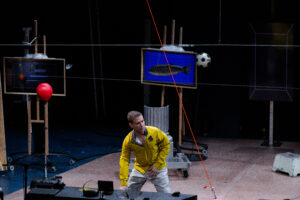
Why is this monumental? The Wooster Group, a theater company based in New York City, can easily be named as the trailblazers of the avant-garde theater not only in the country but wider. Despite a few local endeavors to bring to the fore speculative approaches to experimental theater, most of which pass through the filter of Kindling Arts Festival once a year, Nashville doesn’t get much exposure to theater or performance works that challenge the normative forms. Most likely due to a mixture of good marketing efforts and a thirsty audience for unconventional performances, the tickets for the first two showings of Symphony of Rats were sold out. As it should be!
The Wooster Group is an invaluable asset worth being studied with awe, not only for their advancement and novices in experimental theater and performance, but for also stoically operating through the winds of socio-political climates that have affected the (lack of) financial support to arts. Over a period of almost half a century (since 1975), they have maintained and refined their collective artistic voice, reimagined classical works, from Phaedra by Jean Racine to The Crucible by Arthur Miller and have become kick starters for the careers of many renown stage and movie artists, including Willem Dafoe who was a founding member, Frances McDormand, and Steve Buscemi, to mention a few. What’s exemplary about The Wooster Group is also how carefully they document their scope of operation, an incredible archive of which can be found on their website.
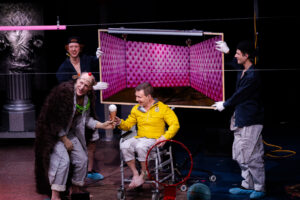
Staged by the director of the ensemble since its inception, Elizabeth LeCompte and co-founder and performer Kate Valk, Symphony of Rats was first produced at The Performing Garage in 1988, directed by Richard Foreman, the acclaimed American avant-garde playwright and the founder of the Ontological-Hysteric Theater who also wrote the play. It is not easy to speak about the narrative of Symphony of Rats because Foreman isn’t interested in clear meanings, and neither is The Wooster Group. Both pairs are keener on subverting narratives and freeing the audiences from constraints of logical denotations. In a broad premise, the President of the United States (played by Ari Fliakos) takes a pill which helps him receive messages from a different dimension. Whether this is outer space, a moronic or higher state of vindication or the depths of the hallucinatory imagination, it never becomes clear nor is the purpose of the play and the restaging.
The president’s aides (played by Niall Cunningham and Andrew Maillet) or as Valk put it, his “otherworldly looking stagehands” do everything possible to assist the president in reaching this obscure realm. Aside from the aides, there are three other characters on stage: I’ll interpret them as ‘the lab rat’ (played by Jim Fletcher), ‘the voice of clarity or reason’ (played by Guillermo Resto) and ‘the stage bot’ (played by Michaela Murphy) who is also the Assistant Director and the Stage Manager of the performance. The stage design which contains many props that according to LeCompte have been reused from previous performances, not only due to lack of funding but also as an initiative to Reduce-Reuse-Recycle as well as costumes (designed by Antonia Belt) resemble a messy transcendental laboratory with homoerotic features. What adds contrast and humor to the chaotic action on stage are the unambiguous and clear-cut sound cues (sound design/music by Eric Sluyter) and the light nucleuses (designed by Toni-award winning Jennifer Tipton and Evan Anderson), thus comprehensively granting the performance a satisfying equilibrium.
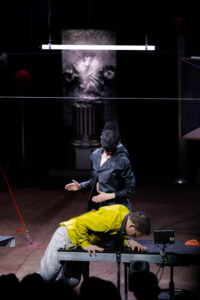
During the post premiere day conversation at OZ Arts, Valk spoke about how her appearance as a performer in Foreman’s staging of Symphony of Rats in 1988 had left a subconscious desire to continue the dialogue with this “play with an open and indirect language” which motivated her to bring in back, this time in the role of the co-director. Valk spoke of wanting to rethink the play in a way that was truthful to Foreman’s language but unrecognizably different from his staging, which was Foreman’s hope as well when The Wooster Group approached him wanting to restage it. Unlike Foreman who had balanced the role distribution to two male and two female identifying actors, where the roles of the actresses were narrowed down to those of the entertainers of the president, this staging has a single female character (Michaela Murphy) who the directors described as an android. During the performance, her back is mostly turned to the audience, she moves props around the stage and serves as a mechanical sex object. When I asked if this was deliberate, LeCompte confirmed, also adding that the highest state of the woman present on stage is that of Alexandra, the digital human icon with a female voice, who rests in the higher realm of being, where the president in fact would like to be.
The precision of coordination between the performers, the sound and light cues, the video works, which show a variety of indicative imagery, from parts of the president’s body being scanned under an ex-ray machine to scenes from the antihero/supervillain movie Suicide Squad to which the actors on stage dub a perfectly synchronized soundscape, are a testament to the assiduous preparations and hard work put into staging Symphony of Rats. Periodical rehearsals for it lasted between December 2021 to its premiere in March 2024. LeCompte and Valk didn’t hesitate to reveal the function of the monitors that were present on stage and above the audience where the actors were receiving audio-visual material that they had rehearsed responses to, one of it being LeCompte’s sister’s hand gestures which she had filmed a few days ago to which the president’s character was responding to. Valk further clarified that the monitors allow the actors to free themselves from conscious embodiments of certain ways of acting, thus enabling them to reinvent something new yet fleeting during each performance.
The sense of humor, clarity, and modesty with which LeCompte, Valk and Tipton shared their experiences of working together, their openness to share mishaps and shortcomings, their capacity to maintain a confrontational and challenging conversation by putting each other on the spot but also giving credit and putting each other on the spotlight, demonstrate nothing less than an organic process of working together that is filled with passion and respect. Symphony of Rats was a treat, an inspiration for theater makers to free their minds, and audiences to question what they consider theater, but so was the artist conversation following the premiere, a rare opportunity to be in direct contact with the foremothers of the American avant-garde theater.
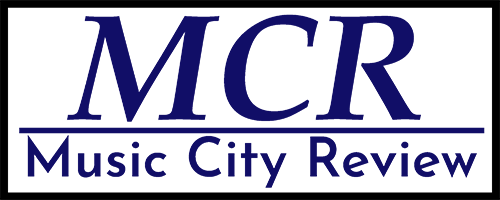
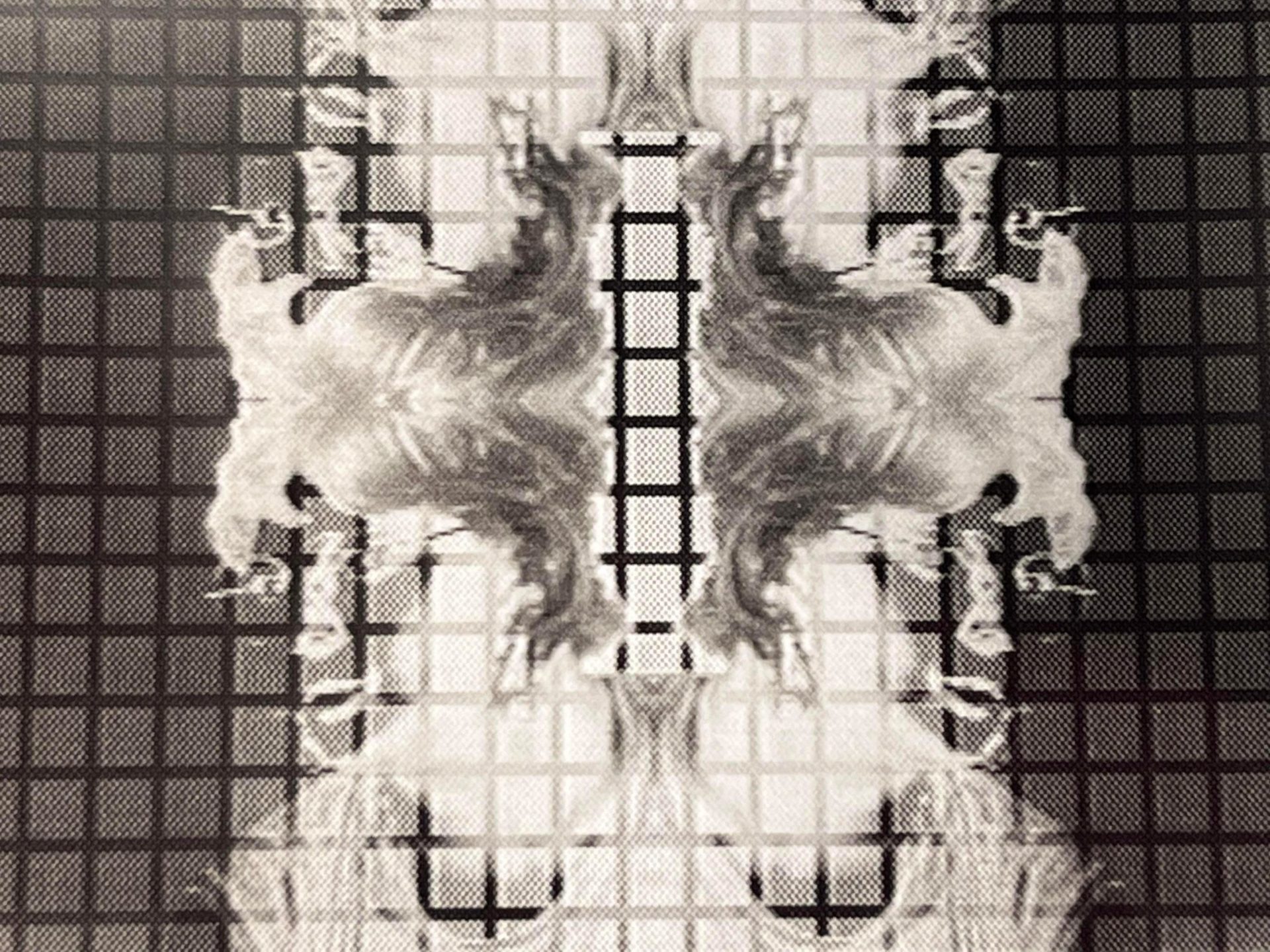
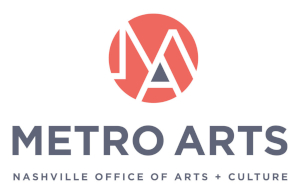
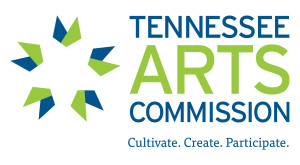
Here’s an article that does a better explanation of the play and correctly got what Kate and Elizabeth explain. if you’re interested. (Renee not Alexandra is just one example).
https://www.uscannenbergmedia.com/2024/10/24/the-wooster-group-rats-and-the-avant-garde/